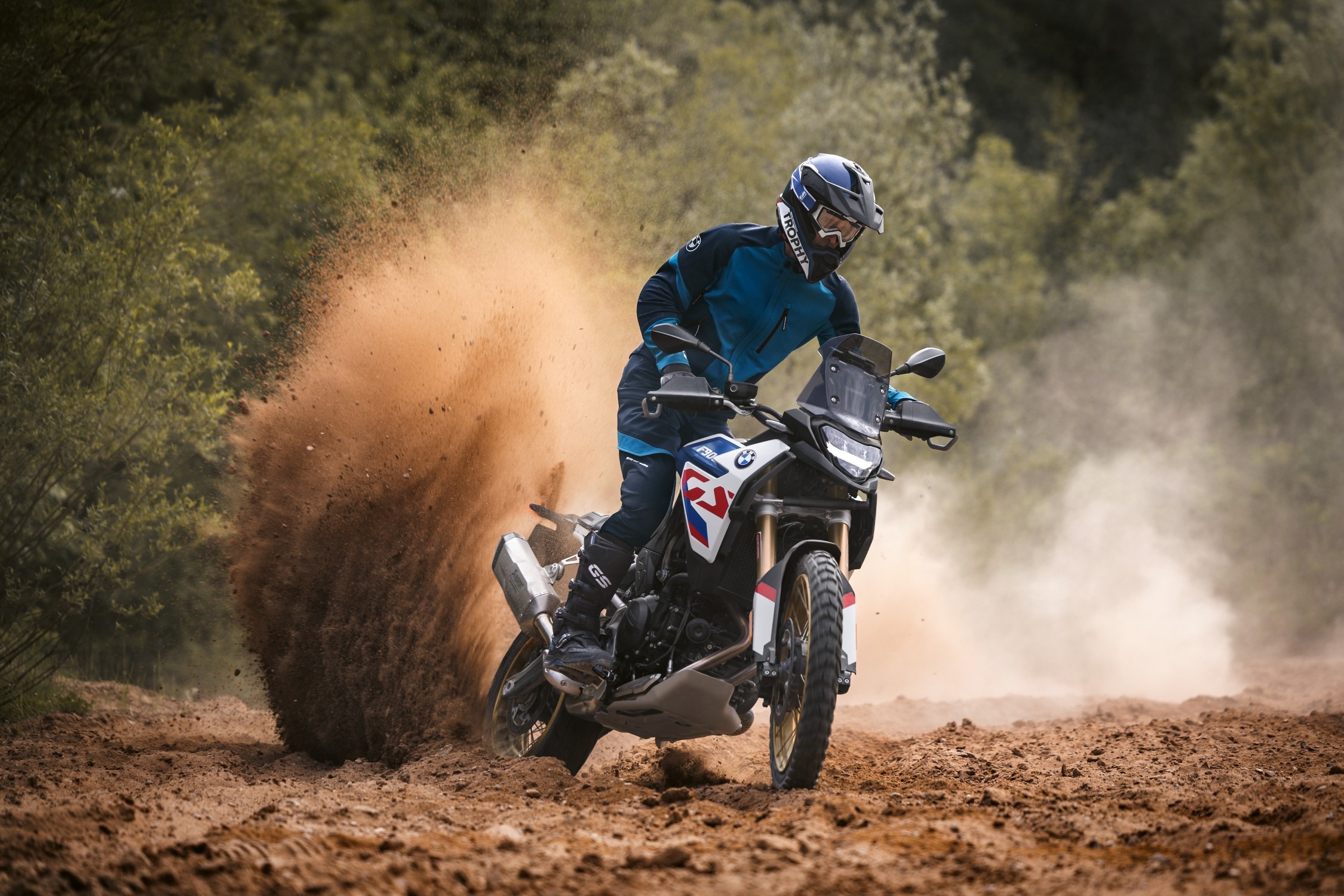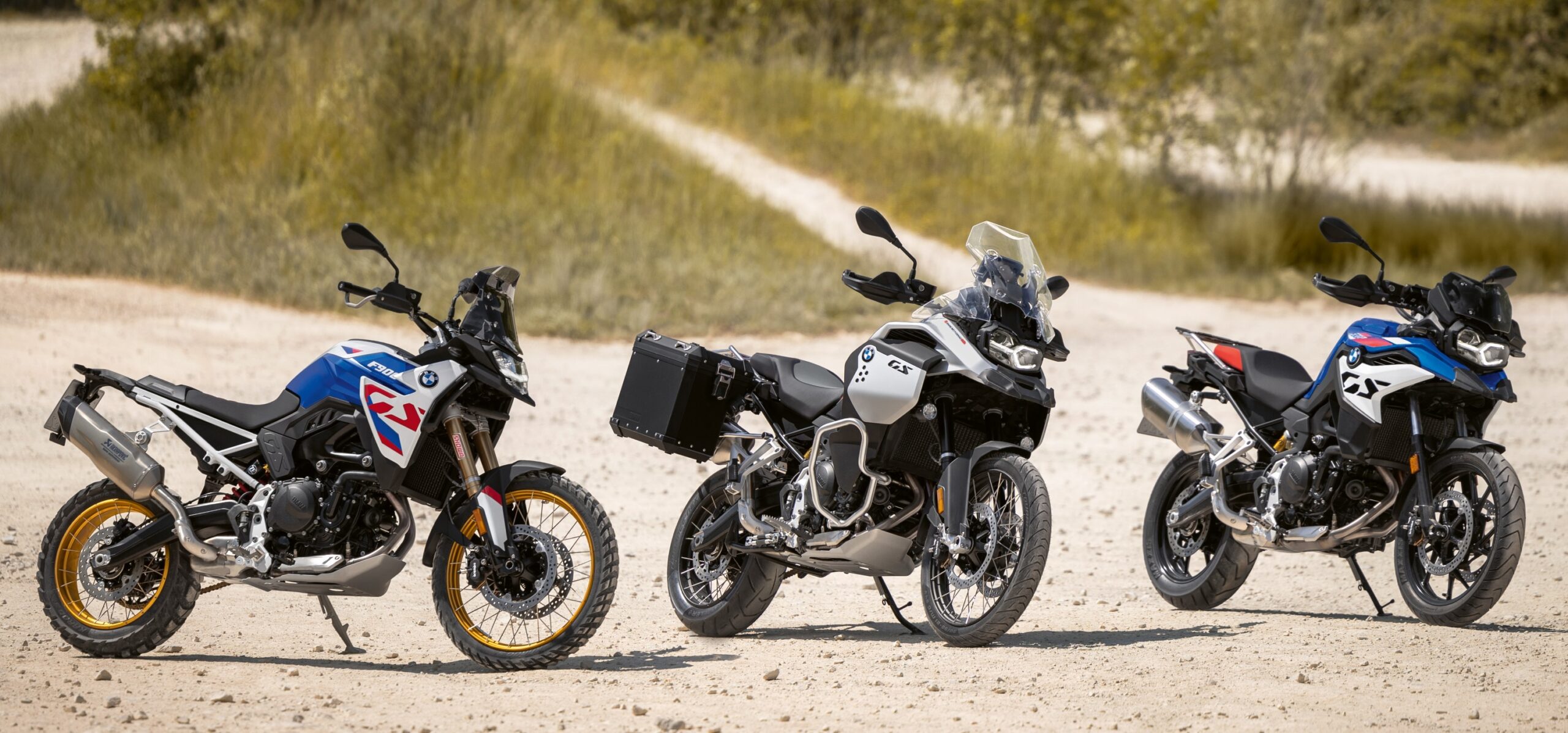BMW’s F series adventure bike line features all new machines for 2024. It includes an F 800 GS, F 900 GS, and F 900 Adventure (GSA). They get a new powerplant and a whole lot more. When the F 800 GS debuted in 2018, its lesser sibling was the F 700 GS. They shared the same motor, but the 700 played second fiddle to the more adventure-capable 800. The BMW F series repeats that scenario for 2024, with the F 900 GS and GS Adventure models taking the limelight, bumping the F 800 GS into a supporting role.
 Power Projection
Power Projection
The F series BMWs share the new 895cc counterbalanced, dry sump parallel twin first used in the F 900 R and XR machines. Per BMW, the 800’s engine configuration makes 87 horsepower and 67 pound-feet of torque at 6,750 rpm, much less than the 900’s 105 horsepower at 8500 rpm. Torque is nearly the same for the 900—68.6 pound-feet at 6,750 rpm. It’s torque that climbs the hills, so why splash out an extra $3,000 ($10,495 vs $13,495) for the 900’s higher top end? More on that coming up.
The new motor gets its additional punch from a 2-millimeter larger bore mated to a 77-millimeter stroke. New forged pistons compress the EFI-supplied air-fuel mixture, creating a 13:1 compression ratio that normally requires premium gas. That’s the spec, but BMW fitted cylinder-selective knock control technology to the F-series twins to burn lower quality fuel. The 270/450 firing order is said to create a “particularly powerful, emotional sound, similar to that of a 90-degree V-twin engine.”

New Frame, More Features
Holding the GS trio together is a new trellis frame formed from welded sheet steel, using the engine as a stressed member. Rear frames are bolt-on vs welded, which can save some money if a crash damages that component. The bikes use a wet clutch with a self-reinforcing and anti-hopping design to provide a measure of safety when downshifting and braking on sketchy surfaces. It also reduces effort at the adjustable clutch lever. A six-speed transmission covers range from low to overdrive, but the convenience of a quickshifter, or Gear Shift Assist Pro in BMW-speak, is optional.

BMW F Series Tech
All three F series twins are ride-by-wire, which supports two standard ride modes, Rain and Road. There are two optional modes for the 800 and three for the 900s. Traction control is there but switchable, and ABS Pro assists in safe stops. BMW’s Dynamic Brake Control prevents unintentional acceleration when braking reaches “a certain deceleration value.” We hope that doesn’t interfere with trail braking. A 6.5-inch TFT screen keeps the rider informed of pertinent travel and engine data in a well-organized fashion. Lighting is 100% LED.

Why Buy the F 900 GS?
The obvious answer is power, but there’s more to it than that. After all, the 800 has plenty for any adventure on the planet and can certainly fly down the freeway (my 2018 F 800 GS could do that). So first off, there’s weight. The claimed poundage shows the 800 at a 17-pound disadvantage, weighing 500 pounds vs 483 for the 900. As the successor to the somewhat porky F 850 GS, the 900 lost 30 pounds, partly through fitting a plastic gas tank, saving nearly 10 pounds over the 850’s steel reservoir.
 Second is suspension, the 900s sporting 43 mm fully adjustable forks with 9.1 inches of travel. The 800 gets by with non-adjustable 41 mm forks and just 6.7 inches of impact absorption. Rear suspension is a similar story—6.7 inches of travel to 8.5 for the 900. Third is spoked wheels instead of cast. BMW carried over this distinction from the original F-series 700/800 models. Finally, only the 900 GSs get the weight-saving, cool-looking Akrapovič muffler.
Second is suspension, the 900s sporting 43 mm fully adjustable forks with 9.1 inches of travel. The 800 gets by with non-adjustable 41 mm forks and just 6.7 inches of impact absorption. Rear suspension is a similar story—6.7 inches of travel to 8.5 for the 900. Third is spoked wheels instead of cast. BMW carried over this distinction from the original F-series 700/800 models. Finally, only the 900 GSs get the weight-saving, cool-looking Akrapovič muffler.
F Series Amenities and Add-ons
Amenities include heated grips, hand protection, and a standard luggage connection for BMW Vario cases. And these wouldn’t be BMWs if there weren’t a host of optional packages and accessories to ponder before writing the big check. We’ll leave it to BMW Motorrad to explain them all.
Read more: 2024 BMW R 1300 GS
Our No Compromise Clause: We do not accept advertorial content or allow advertising to influence our coverage, and our contributors are guaranteed editorial independence. Overland International may earn a small commission from affiliate links included in this article. We appreciate your support.


